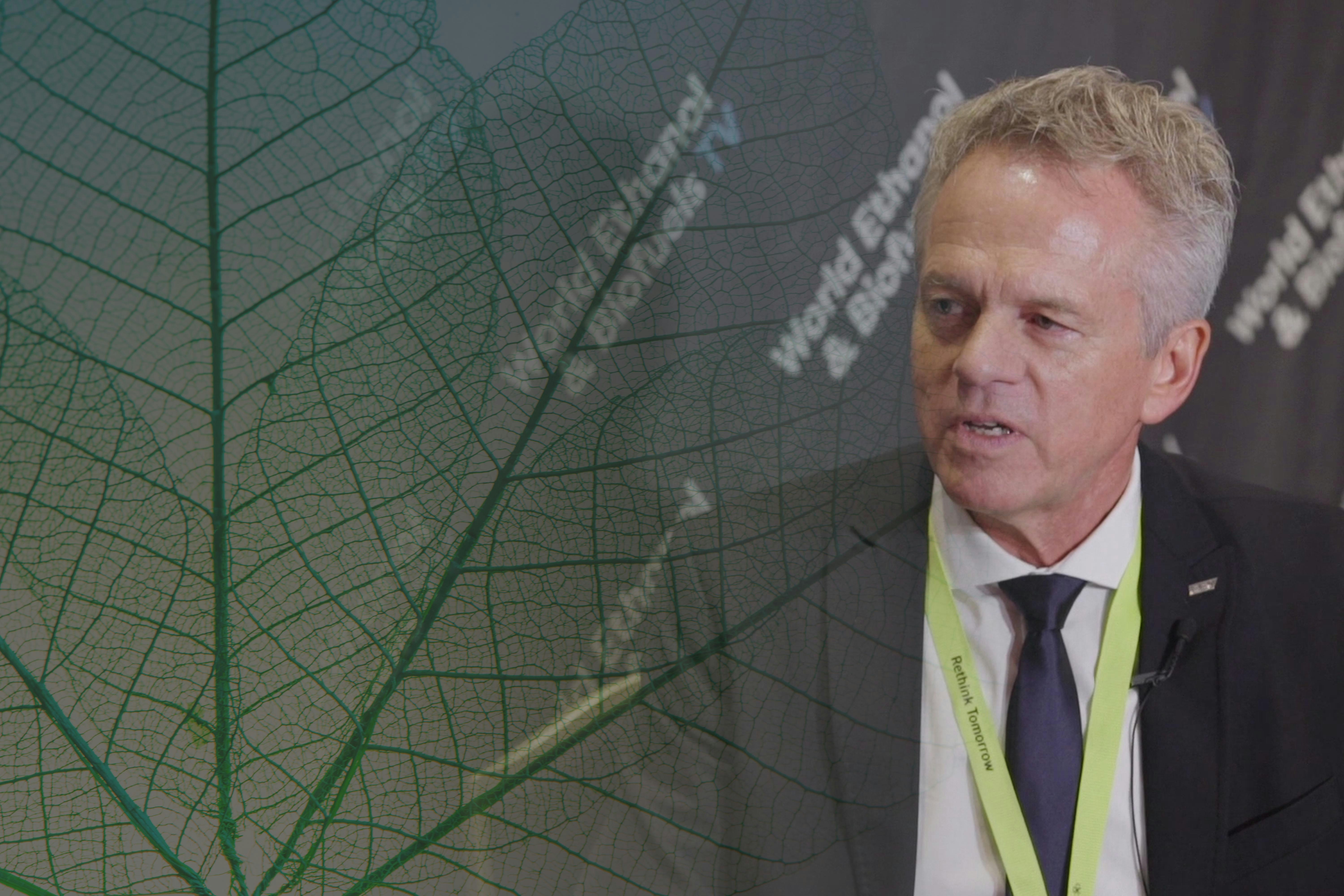Biofuels, electrification and the future of road transportation: Q&A with Christof Schernus

Christof Schernus is Vice President of Business Development Research & Innovation at German vehicle engineering company FEV Europe. In our interview with him at the World Ethanol & Biofuels conference we discussed how decarbonisation will transform Europe's road transport networks, and where biofuels will fit in alongside hybrid and all-electric solutions.
"Our forecast is that still in the year 2030 or 2035 we will still have about 80% to 85% of the vehicles still having an internal combustion engine under the bonnet."
Let’s get things kicked off by talking about how you see the future developing. What do you think Europe’s road transport networks are going to look like by the year 2030?
So by 2030 we will be in a transition process I believe. We will see a strong pick up of multi-modal transport – that means a combination of individual transport if you talk about the transportation of people, together with public transport. Or increasingly we will see shared mobility also in the cities I believe. This will have different impacts on the infrastructure around, so the pick up of collaborative and connected automated driving will require a strong build-up of the ICT infrastructure along the motorways, but also inside the cities, because otherwise cars cannot collaborate. By 2030 we will see a ramp up, and by 2050 I think this will be the dominant story in transportation. Regarding the powertrains I think we will see a strong increase in electrified powertrains. In that sense the internal combustion engine will be supported by electrical components in the powertrain, there will be batteries recuperating the kinetic energy as the vehicle decelerates, and this electric energy from the battery can be used to basically cut off the internal combustion engines when it would be operated at very low park load, and therefore with very low efficiency. So this can be used for - let’s say - creeping and traffic jams and park load. So this enhances the efficiency of the internal combustion engine, and you can limit the operation of the combustion engine where it is most efficiently used. For biofuels and other regenerative fuels, I see a strong need in getting that implemented.
I should ask: for the biofuels industry, you’ve talked about this strong ramp up of electrification. Should they be concerned by that, or is this something that is going to happen in tandem – as we see biofuels increasing, electrification can increase as well?
Well biofuels will have their chance anyway, whether we talk about electric vehicles or ICE based vehicles. Because we need biofuels anyway to sustain the energy sector when in the ongoing decarbonisation we are moving more strongly towards wind and solar power as sources of electricity. These are strongly fluctuating, and in the periods when we have low supply from wind and solar power, then we will have power plants kicking in that use biofuels, and also fuels created beforehand in periods of excess solar power, storing that excess electric energy in synthetic fuels by electrolysing hydrogen and getting CO2 from carbon capture, creating gaseous or liquid synthetic fuels that you can store in bunkers and re-electrify in times of calm darkness.
So we’ll see vehicles which in effect have combustion-based drivetrains, but are electric insofar as the fuel originally came from electric sources.
Yes. So our forecast is that still in the year 2030, 2035 maybe, we will still have about 80%, 85% of the vehicles still having an internal combustion engine under the bonnet. In different degrees of electrification – so this can be hybrid electric vehicles, this can be plug-in hybrids, or just conventional power trains but likely the further we go the more the ICE will be supported by electric components. But when we look at the environmental impact of batteries and electric motors, you have to really find an appropriate balance between the internal combustion engines and all the electrical components.
And if you look at this change that is taking place in the transport sector, what do you think the most important driver is going to be? Is it going to be consumer choice, or is it going to be regulation?
It really depends on which choice is left to the consumer by regulation. So if cities go for banning ICEs from the city limits, then basically the users do not have any choice. It would have a strong social impact actually, because people with less than average incomes likely cannot afford switching to a brand new electric vehicle. So they will have themselves banned from the city limits with their individual mobility, and have to jump on public transport – they have no other choice. So I’m not sure if that would be the wisest decision from the city mayors to completely ban ICEs, because that may create some social upset.
So if we set decarbonisation, electrification aside for a second and focus just on ethanol as a fuel, do you think there’s a case to be made for ethanol as a fuel additive simply from an engine performance standpoint?
I think basically yes. So ethanol as an additive indeed, I wouldn’t go for very high contents of ethanol as a fuel, in particular not in those areas where you have cold winters for example, because then you really run into trouble with oil dilution. It would need additional technical features like fuel preheating in order to avoid accumulating too much ethanol in the oil pan. But let’s say E10 up to E20 – E20 is still from a controls point of view getting a bit tricky – E10 is a very good choice. It reduces the particulate emissions of spark ignition engines, and my personal experience is that it doesn’t increase your fuel consumption. So you have the same range at less cost. That’s my personal impression from running on E10.